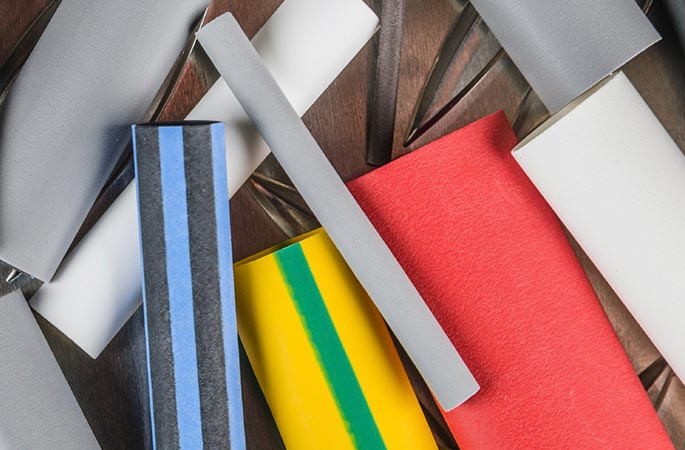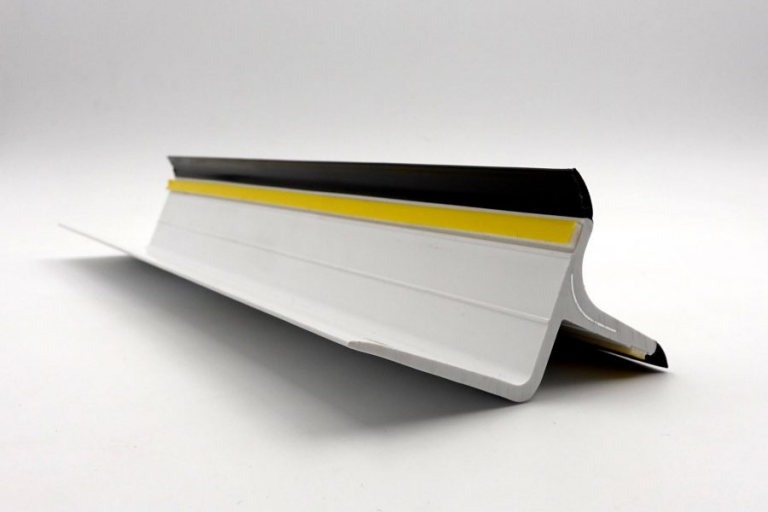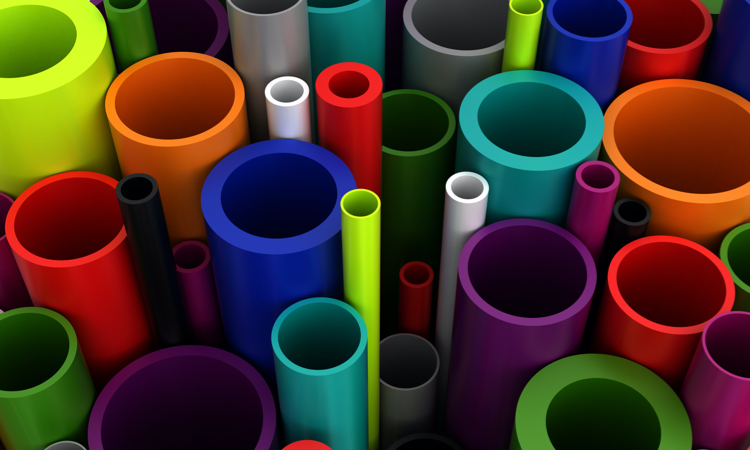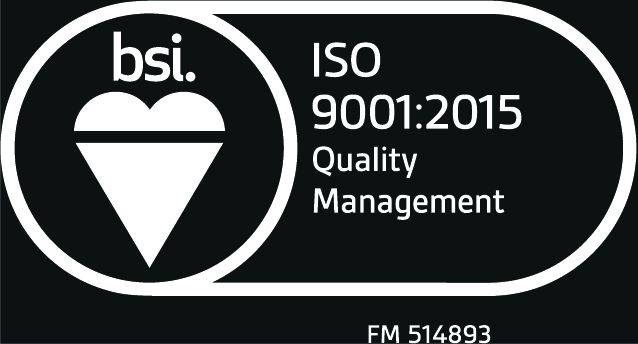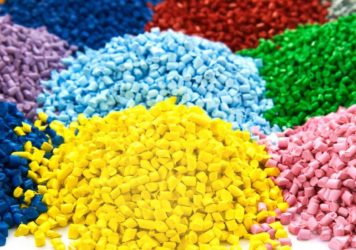
Most Common Thermoplastics Used for Plastic Extrusion
Through the plastic extrusion process, raw thermoplastics are melted and reshaped into custom plastic profiles. Co-extrusion and tri-extrusion processes allow different thermoplastics to be blended to achieve the custom end-product demanded by specific industries and unexpected use cases.
Depending on the profile being created – which can include flexible or rigid, transparent or opaque – specific source plastics are selected. The variety of source plastics and their potential modification through co-extrusion and tri-extrusion is nearly limitless. This extensive selection has accelerated industries from medical to oil and gas, giving them the ability to replace wood, metal, and rubber with cost-effective plastic alternatives.
In this blog we delve into the commonly used thermoplastics for plastic extrusion processes. As experts in the custom plastic extrusion we’ve worked in a variety of industries and created a variety of plastic extruded products.
First, What Are Thermoplastics?
Before we get into the common thermoplastics for plastic extrusion, you might be wondering what are thermoplastics? Thermoplastics are a class of polymers distinguished by their ability to soften and mold when exposed to heat, and then solidify once they are cooled. Unlike thermosetting plastics, which undergo irreversible chemical changes when heated and molded, thermoplastics can be melted and reshaped repeatedly without undergoing significant chemical alteration.
This unique characteristic makes them highly versatile and widely used in various industries. The molecular structure of thermoplastics consists of long polymer chains with weak intermolecular forces, allowing them to readily respond to temperature changes. Commonly derived from petrochemical sources, thermoplastics find applications in everyday products, ranging from packaging materials and consumer goods to medical devices and automotive components.
Why Thermoplastics Are So Popular
One of the defining features of thermoplastics is their recyclability. Due to their reversible melting and solidification behavior, thermoplastics can be melted, reshaped, and reused multiple times without compromising their inherent properties. This recyclability aligns with the growing emphasis on sustainability in modern manufacturing processes, making thermoplastics a preferred choice for eco-conscious industries.
Furthermore, the ease of processing thermoplastics contributes to their widespread adoption. They can be molded using various techniques such as injection molding, extrusion, and blow molding, allowing manufacturers to achieve intricate shapes and designs with efficiency. The versatility of thermoplastics extends to their capacity for blending with additives, reinforcing materials, or colorants, enabling the customization of their physical and visual properties to suit specific application requirements.
Thermoplastics represent a crucial category of plastics characterized by their unique ability to undergo reversible changes in response to temperature variations. This distinctive property, coupled with recyclability and ease of processing is why thermoplastics are indispensable materials across diverse industrial sectors.
Thermoplastics for Co-Extrusions and Tri-Extrusions
Selecting the right plastic extrusion materials begins with identifying the material properties of your application and determining the source plastic that works best. In many cases, an industrial application such as a rigid profile with hinges or layered tubing may require that two thermoplastics be combined through co-extrusion and tri-extrusion.
Polymers may be co-extruded with other plastics or preformed metal to strengthen the profile for specific applications. Extender fillers and performance fillers: Fillers, such as metal fillers to allow for conducting energy in an electrical application, can be used during the extrusion process to extend the polymers being used or to add functionality. Additives can customize plastic profiles for specific applications, such as UV resistance, flame resistance, shock resistance, and more.
Choosing the Right Grade of Thermoplastic
Once you’ve defined the use case for your plastic profile, determine what grade you’ll need. Thermoplastics are graded as commodity, engineering, or performance level. 90% of thermoplastics are commodity graded, offering cost-effective solutions to achieve a variety of plastic profiles. Engineering grade plastics are more specialized and designed to deliver specific performance enhancements. Performance plastics are highly specialized and used primarily in niche applications, such as crucial medical device components.
Commodity plastics, such as PVC support both rigid and flexible plastic profiles. Flexible vinyl (FPVC) is a cost-effective plastic modified through co-extrusion with plasticizers or other additives. It provides insulation and durability to use cases that require a flexible profile. FPVC is found in the food and beverage industry and CPG companies as product packaging.
Non-plasticized PVC is used to achieve rigid profiles in applications such as piping and tubing within the construction industry. Polypropylene blends flexibility with high electrical resistance and heat stability. It’s used in a broad range of applications from tubing for electrical industry projects to manufacturing components for industrial machinery.
Common Engineered Plastics
Engineered plastics, also known as engineering plastics, are a subset of polymers that have been specially formulated to exhibit enhanced mechanical, thermal, and chemical properties compared to standard plastics. These plastic materials are designed to meet specific performance requirements and are often utilized in applications where conventional plastics may not suffice.
These engineered plastics typically offer improved strength, heat resistance, impact resistance, and dimensional stability, making them suitable for demanding environments and applications. Examples of engineered plastics include polyamide (nylon), polycarbonate, polyethylene terephthalate (PET), and acrylonitrile-butadiene-styrene (ABS). Their tailored characteristics make engineered plastics integral in industries such as automotive, aerospace, electronics, and medical devices, where precision, durability, and reliability are paramount.
What is Polyamide? A Common Thermoplastic
Polyamide is a versatile and widely used synthetic polymer belonging to a family of polyamides characterized by a repeating amide linkages in their molecular structure. Commonly known as nylon, polyamide exhibits remarkable strength, durability, and heat resistance, making it suitable for a diverse range of applications. It was first introduced by the DuPont company in the 1930s and has since become a staple in various industries.
In general Polyamide is a strong, durable, and easily modified engineering-grade plastic. It’s favored as a metal replacement like in our state-of-the-art polyamide Inectorplex tube which provides superior flexibility, abrasion, and temperature resistance. Polyamide can also be found as the base of plastic profiles in a variety of loadbearing components, construction elements, and different applications within the gas/oil and automotive industry.
What is the Thermoplastic Material Polycarbonate?
Polycarbonate is a transparent, durable, and lightweight thermoplastic that belongs to the polyester family. This material for its exceptional impact resistance, optical clarity, and heat resistance, so it is widely used in various applications. It was first developed in the 1950s by Bayer AG, and its popularity has since grown due to its versatility.
It is commonly used in the production of eyewear lenses, optical discs, and LED light covers, owing to its optical properties. Its high impact resistance makes it suitable for applications where toughness is crucial, such as in safety glasses, bulletproof windows, and automotive components. Additionally, polycarbonate’s ability to withstand high temperatures without deformation or degradation makes it a preferred choice in the manufacturing of household items, electrical components, and medical devices.
This engineering-grade plastic available as both transparent and colored grade. It’s also used in the construction industry, aircraft industries, and in media such as CDs and DVDs.
The Thermoplastic Acrylonitrile butadiene styrene (ABS)
ABS, or Acrylonitrile Butadiene Styrene, is a common thermoplastic known for its versatility and balanced set of properties. Comprising three monomers—acrylonitrile, butadiene, and styrene—ABS offers a combination of strength, impact resistance, heat resistance, and moldability. This makes it widely used in various industries, including automotive, electronics, and consumer goods.
ABS is a popular choice for injection molding due to its ease of processing, allowing for the creation of intricate shapes and designs. Its impact resistance makes it suitable for applications such as protective gear, automotive parts, and toys. The material’s affordability and well-rounded properties contribute to its broad utilization in manufacturing diverse products, ranging from household appliances to electronic enclosures.
Acrylonitrile butadiene styrene is a rigid yet lightweight thermoplastic polymer. Since it has many beneficial mechanical and engineering properties it’s widely used as wire protection, electrical engineering, and even piping in the automotive industry.
We cover everything you should know about ABS in our article “Why ABS Plastic is Best for Your Custom Plastic Project.”
High-Impact Polystyrene (HIPS) is Another Common Thermoplastic
HIPS, or High-Impact Polystyrene, is another common thermoplastic that is a type of polystyrene that’s been modified for enhanced impact resistance, making it suitable for various applications. HIPS combines the inherent properties of standard polystyrene with added toughness, making it less brittle and more resilient to impacts. It is commonly used in packaging materials, disposable products, and consumer goods due to its affordability, ease of processing, and versatility.
HIPS can be easily molded or thermoformed, allowing for the creation of intricate shapes and structures. Additionally, its compatibility with various printing methods makes it a popular choice for signage, displays, and other visual communication applications. Since HIPS offers durability and strength to a variety of hard plastic profiles it’s common across industries for use in packaging, automotive parts, children’s toys, and plastic utensils.
Learn more about HIPS plastic benefits in our article, “What Are The Top 5 Benefits of HIPS Plastic?”
Choosing the Right Thermoplastic for Your Project Is Easy With Inplex’s Expert Help
Let Inplex help you find a custom solution for co-extruding or tri-extruding multiple thermoplastics to achieve your goal. Our team has the knowledge, experience, and industry perspective to work with you on your most ambitious extrusions. We work closely with our clients to help them understand the range of options available.
We have a wide range of experience that includes working with a host of industry-standard thermoplastics and leveraging advanced processes such as co-extrusions and tri-extrusions. While the material you end up working with will ultimately depend upon the intended industrial application of the final product, there are still many choices to chose from.
No matter what your plastic extrusion needs, Inplex Custom Extruders can guide you to help you choose the right thermoplastics for your next custom plastic extrusion project.
Contact us

Request a quote today for your next custom plastic extrusion order.
Back to Blog

